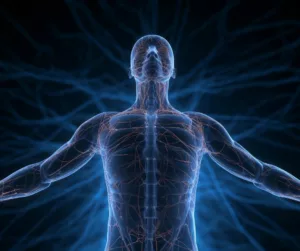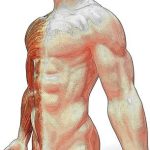Manual Medicine with Jeffrey Russell
Manual medicine, also known as manual therapy, is a specialized form of treatment using hands-on techniques to diagnose, treat, and prevent a wide range of musculoskeletal and neuromuscular conditions. Abacus Chinese Medicine in Louisville, KY provides a unique array of manual therapies, as well as acupuncture and Chinese herbal medicine.
Manual medicine requires a practitioner to use respectful and gentle physical contact when assessing and treating a patient. The methods commonly focus on improved functioning and pain relief. There are several key components of manual medicine. These are:
- Assessment: Manual medicine practitioners begin by conducting a thorough assessment of the patient, including a physical examination, medical history review, and evaluation of movement, posture, and joint mobility. Through hands-on assessment techniques, such as palpation, range of motion testing, and muscle testing,
 practitioners can identify areas of dysfunction, pain, and restricted movement in the body.
practitioners can identify areas of dysfunction, pain, and restricted movement in the body. - Treatment: Based on the assessment findings, manual medicine practitioners develop a personalized treatment plan tailored to the individual needs and goals of the patient. Here are the manual medicine methods used by Jeffrey Russell, MS, DOM, L.Ac, at Abacus Chinese Medicine:
-
- Muscle Energy Technique (MET)—the patient is guided to actively contract and relax specific muscle groups while the practitioner provides gentle manual guidance.
- Sotai—this method treats body misalignment, releasing abnormal tensions that lead to functional and structural issue. The body is encouraged to relax and move gently.
- Koshi Balancing—a method that addresses misalignment in the body by working with the meridians to achieve greater flow of life energy. The work involves gentle and graceful movements guided by the practitioner.
- Strain/Counterstrain—this method involves body positioning guided by the practitioner. The work targets muscle groups that bear an excessive load. The method relieves the muscle strain, and consequently pain is also relieved.
- Functional Release—this therapy relieves pain, improves mobility and restores balance to the body. The goal is to release restrictions and promote optimal functioning.
- Myofascial Release (Direct and Indirect)—this method is used to relieve pain and restricted movement caused by tension in the fascia. Fascia is the connective tissue that surrounds muscle and organs in the body.
- Applied Kinesiology (AK)—this uses manual muscle testing to diagnose problems. It is based on the principle that muscles reflect the health of underlying bodily systems and their associations with nerves.
- Craniosacral Therapy—this treatment works with the subtle movement of cerebrospinal fluids that flow through the skull, spine and sacrum.
Along with manual treatment, patients are educated about self-care strategies to enhance recovery and prevent injury, and may be prescribed exercises to be done at home to support the long-term success of manual therapy treatments.
Practitioners of manual medicine therapies often work collaboratively with other healthcare providers, such as physicians, physical therapists, and athletic trainers, to provide comprehensive care and support the overall well-being of the patient.

